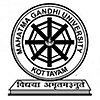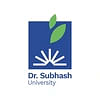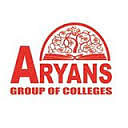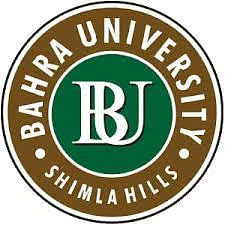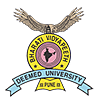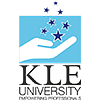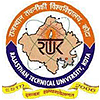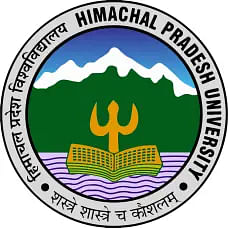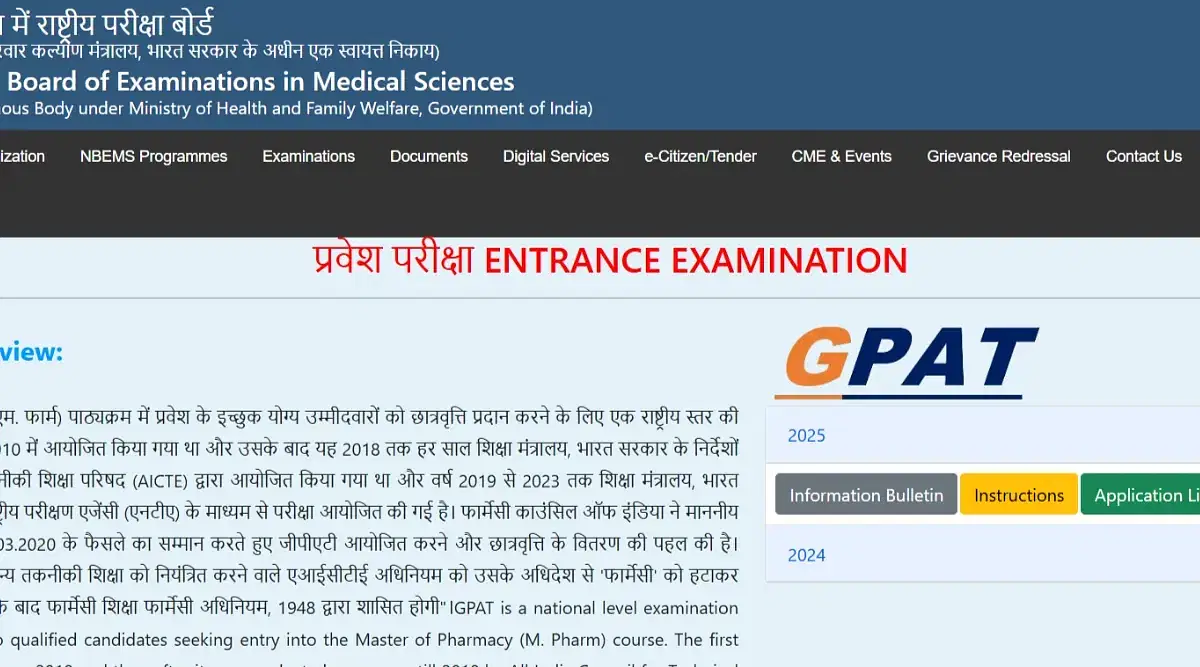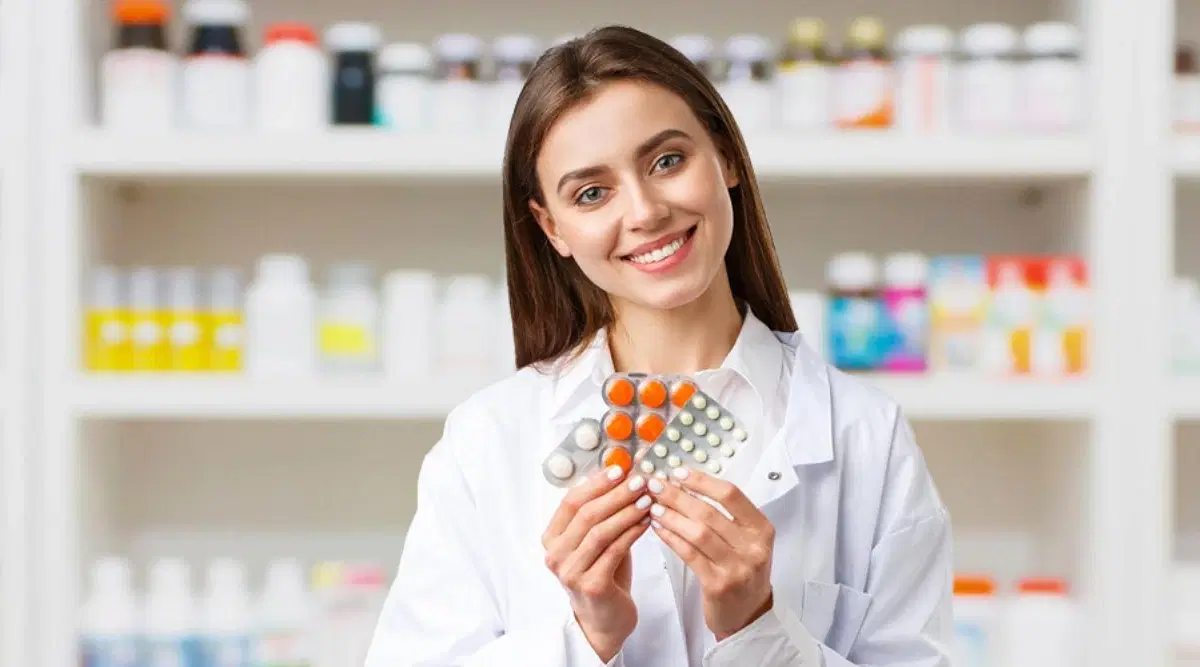
Table of Contents
GPAT syllabus 2025 is set by the organizing body. The syllabus for various subjects and the topics to prepare have been given in the article below. Applicants are advised to go through the given GPAT 2025 syllabus carefully and prepare the topics accordingly.
GPAT 2025 Syllabus Highlights
National Testing Agency (NTA) has published the GPAT 2025 syllabus for each streams, i.e., for Physical Chemistry, Physical Pharmacy, Organic Chemistry, Pharmaceutics, Pharmaceutical Chemistry, Pharmacology, and Pharmacognosy.
Aspirants must ensure that they have profound knowledge about the field they will be opting for, the associated syllabus prescribed under the GPAT syllabus 2025 and the question pattern of the same and should accordingly work hard enough to crack the exam.
- GPAT 2025 Syllabus for Physical Chemistry
- GPAT 2025 Syllabus for Physical Pharmacy
- GPAT 2025 Syllabus for Pharmaceutical Chemistry
- GPAT 2025 Syllabus for Pharmaceutics
- GPAT 2025 Syllabus for Pharmacology
- GPAT 2025 Syllabus for Pharmacognosy
- GPAT 2025 Syllabus for Pharmaceutical analysis
- GPAT 2025 Syllabus for Biochemistry
- GPAT 2025 Syllabus for Biotechnology
- GPAT 2025 Syllabus for Microbiology
- GPAT 2025 Syllabus for PathoPhysiology
- GPAT 2025 Syllabus for Microbiology
- GPAT 2025 Syllabus for Biopharmaceutics and Pharmacokinetics
- GPAT 2025 Syllabus for Human Anatomy and Physiology
- GPAT 2025 Syllabus for Pharmaceutical Engineering
- GPAT 2025 Syllabus for Pharmaceutical Management
- GPAT 2025 Syllabus PDF Download
GPAT 2025 Physical Chemistry Syllabus
GPAT syllabus 2025 for physical chemistry is mentioned in the table below.
| Unit | Name | Topics |
|---|---|---|
| 1 | Composition & physical states of matter | Intermolecular forces & their impact on the state of the matter. Various physical properties of matter, dipole moment, dielectric constant, Van Der Waal's equation & critical phenomenon, liquefaction of gases, aerosols. |
| 2 | Colligative Properties | The liquid state, vapor pressure, ideal & real solutions. Raoult's law, the elevation of boiling point, depression of freezing point, osmotic pressure, determination of molecular weight based on colligative properties. |
| 3 | Thermodynamics | First, the second & third law of thermodynamics. Thermochemical laws, isothermic & adiabatic processes, reversible processes, work of expansion, heat content, enthalpy, heat capacity. Gibb's & Helmholtz equation & chemical potential. |
| 4 | Refractive index | Refractive index, specific refractivity, molar refractivity, refractometers |
| 5 | Solutions | Solubility, factors affecting solubility, solubility curves. Types of solutions, the effect solvency, pH & other factors on solubility. The solubility of gases in liquids, liquids in liquids, & solids in liquids, critical solution temperature, the law of partitioning & its applications. Solute-solvent interactions. Expression of the concentration of pharmaceutical solutions & calculations. Molarity, molality, mole fraction & percentage expressions. |
| 6 | Electrochemistry | Properties of electrolyte solutions, electrolysis. Faraday's law of electrolysis, electron transport, electrical cell, single electrode potential, concentration cells, half-cells & half-cell potential, types of half cells, sign convention, Nernst equation, salt bridge, electromotive series, standard potential, She, Measuring the relative voltage of half cells, Calculation of standard potential, Reference & indicator electrodes, Standard oxidation-reduction potential. |
| 7 | Ionic equilibrium | Theory of conductivity, equivalent conductance, mobility of ions, specific conductance. |
| 8 | Kinetics | Order of reactions, derivation & internal form of rate laws, molarities of reaction, derivation of rate constants. |
GPAT Exam Syllabus 2025 for Physical Pharmacy
GPAT exam syllabus 2025 for physical pharmacy is mentioned in the table given below.
| Unit | Name | Topics |
|---|---|---|
| 1 | Matter, properties of matter | States of matter, change in the state of matter, latent heat and vapour pressure, sublimationcritical point, eutectic mixtures, gases, aerosols- inhalers, relative humidity, liquid complexes, liquid crystals, glasses state, solid crystalline and amorphous polymorphism. |
| 2 | Micromeritics and powder rheology | Particle size and distribution, average particle size number and weight distribution, particle number, methods of determining particle size and volume, optical microscopy, sieving, sedimentation, determining surface areas, permeability, adsorption, derived properties of powders, porosity, packing arrangement densities, bulkiness and flow properties. |
| 3 | Surface and interfacial phenomenon | Liquid interface, surface and interfacial tensions, surface free energy, measurement of surface and interfacial tension, spreading coefficient, adsorption, and liquid interfaces, surface-active agents, HLB classification, solubilization, detergency, absorption at solid interfaces, solid-gas and solid-liquid interfaces, complex films, electrical properties of interfaces. |
| 4 | Viscosity and rheology | Newtonian systems, the law of flow, kinematics viscosity, the effect of temperature, non-Newtonian systems, pseudoplastic, dilatant, plastic, thixotropy in formulations, determination of viscosity and thixotropy by capillary, falling ball, rotational viscometer, application of theology in pharmacy. |
| 5 | Dispersion systems | a. Colloidal dispersions: Definition, Types, properties of colloids, protective colloids, application of colloids in pharmacy. b. Suspensions and emulsions: Interfacial properties of suspended particles settling in suspension, the theory of sedimentation, the effect of Brownian movement, sedimentation of flocculated particles, sedimentation parameters, wetting of particles, the significance of electrical properties in dispersions, controlled flocculation, flocculation in structured vehicles, rheological considerations, emulsions: types, theories, physical stability. |
| 6 | Complexation | Classification of complexes, methods of preparations and analysis, applications. |
| 7 | Buffer | Buffer equations and buffer capacity in general. Buffers in pharmaceutical systems, preparations and stability buffered isotonic solutions, Measurements of tonicity calculations and methods of adjusting isotonicity. |
| 8 | Solubility | a. Miscibility-influence of foreign substances three-component systems, dielectric constant and solubility, the solubility of solids in liquids ideal and non-ideal solutions solvation and association in solutions the solubility of salts in water the solubility of slightly soluble and weak electrolyte calculating the solubility of weak electrolytes as influenced by pH, the influence of solvents on the solubility of drugs the combined effect of pH and solvents, distribution of solutes between immiscible solvents, effect of ionic dissociation and molecular association on partition, extraction, preservatives action of weak acids in emulsions, drug action and distribution coefficient. b. Concepts of dissolution and diffusion. |
GPAT 2025 Organic Chemistry Syllabus
GPAT syllabus 2025 for organic chemistry is mentioned in the table given below.
| Unit | Name | Topics |
|---|---|---|
| 1 | General principles | A brief review of classification & sources of organic compounds, sp3, sp2, sp hybridization, sigma & pi- bonds, bond lengths, bond angles & bond energies along with their significance in reactions should be carried out. An overview of bond polarization, hydrogen bonds, inductive effects, resonance, and hyperconjugation be taken. Concepts of homolytic & heterolytic bond fission, acidity & basicity with different theories should be covered briefly. Ease of formation & order of stabilities of electron-deficient & electron-rich species along with the reasons for the same should be covered. Relationships between energy content, stability, reactivity & their importance in chemical reactions should be covered. Calculations for determining an empirical & molecular formula should be covered. |
| 2 | Different classes of compounds | Alkanes [including cyclic compounds] Alkenes [including cyclic compounds], Alkynes [only open-chain compounds], Aliphatic hydroxyl compounds, Alkyl halides, Aldehydes & Ketones, Carboxylic acids, All functional derivatives of carboxylic acids. |
| 3 | Protection & deprotection of groups | Introduction to protection & deprotection of functional groups. Two examples each for amino, hydroxyl, & carbonyl groups. The significance of these in syntheses should be explained. |
| 4 | Aromaticity & chemistry of aromatic compounds | Concept of aromaticity, Huckel's rule & its use in determining the aromatic/non-aromatic character of a compound. Brief coverage of the structure of benzene. Detailed coverage of electrophilic & nucleophilic aromatic substitution reactions. Reactivity & orientation in these reactions. Reactivity & orientation in mono- & disubstituted benzenes. Benzyne mechanism. |
| 5 | Different aromatic classes of compounds | Aromatic hydrocarbons, Phenolic compounds, Aromatic & aliphatic amines, Diazonium salts, Aromatic nitro- compounds, aryl halides, & ethers. |
| 6 | Polycyclic aromatic hydrocarbons | Syntheses & reactions with mechanisms of bi & tricyclic fused carbocyclic rings like naphthalene, anthracene, & phenanthrene. |
| 7 | Carbonyl Chemistry | Carbonyl chemistry involves group conversions & their reaction mechanisms along with stereochemistry wherever applicable. a. Wolf-Kishner reduction & Huang-Minlong modification, b. Reduction of aryl sulfonyl hydrazine/hydrazones to alkanes, c. Bamford Steven reaction, d. DCC Oxidation of alcohol. e. Michael addition / 1,4-addition / conjugate addition, f. Mannich condensation / reaction, g. Robinson annulation, h. Stobbe condensation. i. Darzen's glycidic ester synthesis, j. Beckmann rearrangement, k. Baeyer Villiger rearrangement. l. Curtius, Wolff, & Lossen rearrangements. m. Willgerodt rearrangement. n. Pinacol-pinacolone rearrangement, o. Methylene transfer reactions. Use of diazomethane & sulphur ylides in the same. p. Mono- & dealkylation in 1,3-dicarbonyl compounds. q. Formation & use of enol ethers, enol acetates & enamines as protective groups & in regiospecific alkylations. |
| 8 | Heterocyclic Chemistry | IUPAC Nomenclature of heterocyclic rings [3-10 membered] containing O, S, & N atoms. Nomenclature of above rings containing mono-, di-, & multiple [same or different] heteroatoms should also be covered. Nomenclature of 2 & 3 fused rings containing mono-, di-, & multiple heteroatoms [same or different] should also be covered. Syntheses & reactions of three to six-membered rings in detail. Syntheses of five & six-membered rings containing mono- or any di-heteroatoms [O, S, & N]. Syntheses of quinoline, isoquinoline, benzoxazole, benzothiazole, & benzimidazole, benzotriazole, and benzothiazole. |
| 9 | Bridged rings | Bridged ring systems & their nomenclature.C8, C9, C11 bridged bicyclic alkanes. Chemistry of hexamine, morphan, biperiden, amantadine, diazabicyclo[2.2.2] octane. |
| 10 | Kinetic & thermodynamic control | Kinetic & thermodynamic control of sulfonation, enolate anion formation & alkylation of enamine reactions. |
| 11 | Stereochemistry | Stereochemistry. Chirality & asymmetry [introduction of the same to S, P, & N]. Definition & classification [different types of isomerisms]. Enantiomers, diastereomers. Enantiomerism & diastereomerism. Meso compounds & their optical activity. Stereochemistry in acyclic compounds. Newman projection formulae & their significance. Conformational analysis of n-butane. Absolute & relative configuration. Assigning R & S configuration based on Cahn Ingold & Prelog system. Racemic mixture- its definition & resolution. Definitions of terms stereoselective, stereospecific, Enantiomeric excess & diastereomeric excess. Stereochemistry in cyclic systems. Conformations of cyclohexane. Cis-trans relationship in cyclohexane. Prediction of stability of different conformations of 1, 2- 1,3- & 1,4- disubstituted cyclohexanes. Effect of multiple substitutions on the stability of cyclohexane conformations. Chair conformations of cis-, & trans-decalins, perhydrophenanthrenes, & a tetracyclic steroidal nucleus. An introduction to atropisomerism. |
| 12 | Carbohydrates | Carbohydrates. Definition & classification. D & L nomenclature in sugars. Different ways of drawing / representing a sugar molecule [including cyclic Structure], interconversion of these representations. Anomers & epimers. Mutarotation. Reactions of glucose. Chain extension & chain reduction of sugar. |
| 13 | Amino acids & proteins | Amino acids & proteins. Definition & classification. D & L Amino acids, natural, essential, & nonessential amino acids. Denaturation, Strecker, Gabriel phthalimide methods for the preparation of amino acids. Peptide bond & its formation. Two protective groups each, for -NH2 & -COOH functionalities during protein synthesis. Sequencing of a protein by chemical & enzymatic methods. |
| 14 | Pericyclic reactions | Pericyclic reactions. Concept of HOMO & LUMO. Drawing of HOMO & LUMO of 1, 3-butadiene, allylic cation, radical & anion, & 1, 3, 5-hexatriene, Diel's-Alder & retro Diel's Alder reaction. |
GPAT 2025 Pharmaceutical Chemistry Syllabus
GPAT 2025 syllabus for pharmaceutical chemistry is mentioned in the table given below.
| Unit | Name | Section | Topic |
|---|---|---|---|
| 1 | Pharmaceutical Inorganic Chemistry | Pharmaceutical Impurities | Impurities in pharmaceutical substances, sources, types & effects of impurities. Limit tests for heavy metals like lead, iron, arsenic, mercury & for chloride & sulphate as per Indian Pharmacopoeia [I. P.]. |
| Monographs | Monograph & its importance, various tests included in monographs as per me. P. A study of the following compounds concerning their methods of preparation, assay, & pharmaceutical uses of sodium citrate, calcium carbonate, copper sulphate, light & heavy kaolin, ammonium chloride & ferrous gluconate. |
||
| Isotopes | Isotopes- stable & radioactive, mode & rate of decay. Types & measurement of radioactivity. Radiopharmaceuticals & their diagnostic & therapeutic applications in pharmacy & medicine such as 125I, 32P, 51Cr, 60Co, 59Fe,99-M. Radiocontrast media, use of BaSO4 in medicine. |
||
| Dentifrices, desensitizing agents, & anticaries agents | |||
| 2 | Medicinal Chemistry | Therapeutic classes of drugs | General anesthetics, Local anesthetics, Diagnostic agents, Coagulants, anticoagulants & plasma expanders, Antiseptics, disinfectants, sterilants, & astringents, Purgatives, laxatives & antidiarrhoeal agents. |
| Various classes of therapeutic agents | Antimalarials, Antiamoebic agents, Anthelmintic agents, Antibacterial sulpha drugs [only], Quinolone antibacterials, Antimycobacterial drugs, Antifungal agents, Antiviral agents including HIV & anti-HIV drugs, Thyroid & antithyroid drugs, Antiallergic agents, Antiulcer agents & Proton Pump Inhibitors, Hypoglycemic agents. | ||
| Different classes of therapeutic drugs | I. Sedative-hypnotics, Antiepileptic agents, Neuroleptics, Anti-anxiety drugs.II. Antibiotics. Penicillins, cephalosporins & other beta-lactam antibiotics like imipenem & aztreonam. Beta-lactamase inhibitors such as clavulanic acid & sulbactam. Chloramphenicol. Tetracyclines. Aminoglycoside antibiotics. Macrolide antibiotics. Lincomycins. Polypeptide antibiotics. Anticancer antibiotics. III. Steroids. Corticosteroids [gluco- & mineralocorticoids] & anti-inflammatory steroids. Sex steroids. Male & female contraceptive agents. Anabolic steroids. Anticancer agents. |
||
| Different classes of therapeutic drugs | I. Narcotic [centrally acting] analgesics [analgetics]. Morphine & all its structural modifications [peripheral & nuclear]. Narcotic agonists & antagonists [dual & pure]. Non-narcotic analgesics [NSAIDS]. Difference between narcotic & non-narcotic agents. II. Adrenergic drugs. Neurotransmitters & their role. General & specific adrenergic agonists & antagonists [up to alpha-2 & beta-2 only]. III. Cholinergic agents. Muscarinic & nicotinic cholinergic agonists & antagonists [up to M2 & N2]. Neuronal [transmission] blockers. IV. Drugs used in neuromuscular disorders. Drugs used in the treatment of Parkinson's disease. Central & peripheral muscle relaxants. V. Hypertensive, antihypertensive, & antianginal agents. VI. Diuretics. VII. Eicosanoids. Prostaglandins, prostacyclins, & thromboxanes. Their biochemical role, biosynthesis, & inhibitors. |
||
| Introduction to the quantitative structure-activity relationship. [QSAR]. Linear free energy relationship. Hammett's equation. Use of substituent constants such as π,σ, Es, & physicochemical parameters such as pKa, partition coefficient, Rm, chemical shifts, molar refractivity, simple & valance molecular connectivity to indicate electronic effects, lipophilic effects, & steric effects. Introduction, methodology, advantages &disadvantages/limitations of Hansch analysis. | |||
| Asymmetric synthesis. Chirality, chiral pool, sources of various naturally available chiral compounds. Eutomers, distomers, eudismic ratio. Enantioselectivity & enantiospecificity. Enantiomeric & diastereomeric excess. Prochiral molecules. Asymmetric synthesis of captopril & propranolol. |
|||
| Combinatorial chemistry. Introduction & basic terminology. Databases & libraries. Solid-phase synthesis technique. Types of supports & linkers, Wang, Rink, & dihydropyran derivatized linkers. Reactions involving these linkers. Manual parallel & automated parallel synthesis. Houghton's tea bag method, micromanipulation, recursive deconvolution. Mix & split method for the synthesis of tripeptides. Limitations of combinatorial synthesis. Introduction to throughput screening. |
|||
GPAT 2025 Pharmaceutics Syllabus
GPAT syllabus 2025 for pharmaceutical is mentioned in the table given below.
| Unit | Name | Topics |
|---|---|---|
| 1 | Pharmacy Profession & Introduction to Pharmaceuticals | Pharmacy as a career, evaluation of Pharmacy, earlier period middle to modern ages.Definition, the importance of pharmaceuticals, areas concerned, scope of Pharmaceutics, history and development of the profession of Pharmacy and Pharmaceutical industry in India. A brief review of present Indian Pharma. Industry in a global perspective. |
| 2 | Introduction to the dosage form | Definition of the drug. New drug and dosage form. The desirable properties of a dosage form, the need for the dosage form. Ideas about the available type of dosage forms and new drug delivery system. |
| 3 | Sources of drug information | introduction to Pharmacopoeia concerning IP, BP, USP and International Pharmacopeia. Study of structure/features (index) general notice and compartment of monographs of excipients, drug and drug product. Other sources. Textbooks, journals, internet (drug information system, online database, patient/ consumer information and non- print material. Classification of information, primary, secondary and tertiary. Nomenclature of the drug. |
| 4 | Allopathic dosage form | Merits/demerits, importance, formulation development - vehicles/excipients with examples for the dosage form: liquid dosage form: monophasic liquid dosage form. Aromatic waters, syrup, elixir, linctus, lotion, liniment, glycerites, solutions, spirits, ENT preparations, mixtures, paints, mouthwash. |
| 5 | Crude extract | Infusion, decoction, maceration, percolation, tincture and extract. Methods of preparations of dry, soft and liquid extract. |
| 6 | Allergenic extract | Types of allergens, preparation of extract, testing and standardization of extracts. |
| 7 | Biological products | Absorbable and non-absorbable material types, sutures and ligatures, processing, manufacturing, sterilization, packing, QC tests of materials like catgut and nylon |
| 8 | Pharmaceutical Plant, location, layout | Plant location and layout of an industry. Various factors affecting locational aspects of chemical and pharmaceutical plants. The layout of plant building and the importance of flow sheet, the difference between the scientific process and technological process, the layout of various departments, equipment, and product layout v/s process layout. |
| 9 | Dosage Form Necessities and Additives | Antioxidants, preservatives, colouring agents, flavouring agents and diluting agents, emulsifying agents, suspending agents, ointment bases, solvents, and others. |
| 10 | Powders | Advantages and limitations as dosage form, manufacturing procedure and equipment, special care and problems in manufacturing powders, powders of IP, effervescent granules and salts. |
| 11 | Capsules | Hard gelatin capsules, shell formulation and manufacturing, capsule sizes, storage, filing, cleaning process general formulation contents and evaluation. Soft gelatin capsules, shell formulation, formulation contents, filing, sealing and storage. Microencapsulation, advantages, encapsulation materials, methods of microencapsulation, I.P. formulations |
| 12 | Tablets | Types, ideal requirement, classification, granulation methods, general formulation, compression machines, different types of tooling’s, difficulties in tabletting, troubleshooting aspects, evaluation, sugar coating, compression coating, film coating, problems in tablet coatings and their troubleshooting aspects. IP formulations. |
| 13 | Parenterals - product requiring sterile packaging | Definition, types advantages and limitations, general formulation, vehicles, production the procedure, production facilities, controls, tests, selected IP injections, sterile powders, implants, emulsions, suspensions. |
| 14 | Suspensions | Formulation of deflocculated and flocculated suspension, manufacturing procedure, evaluation methods, IP suspensions. |
| 15 | Emulsions | Types, emulsifying agents, general formulation, manufacturing procedure, evaluation methods, IP emulsions. |
| 16 | Suppositories | Ideal requirements, bases, manufacturing procedure, evaluation methods, IP products. |
| 17 | Semisolids | Definitions, bases, general formulation, manufacturing procedure, evaluation methods, IP products. |
| 18 | Liquids(solutions, syrups, elixirs, spirits, aromatic water, liquid for external uses) | Definition, Types, general formulation, manufacturing procedure, evaluation methods, IP products. |
| 19 | Pharmaceutical Aerosols | Definition, propellants, general formulation, manufacturing and packaging methods, pharmaceutical applications. Impacts of propellants on the environment |
| 20 | Ophthalmic preparations | The requirement, formulation, methods of preparation, containers, evaluation, IP products. |
| 21 | Preformulations | Consideration of importance, physical properties, physical forms, particle size, crystal forms, bulk control, solubility, wetting, flow cohesiveness, compressibility, organoleptic properties and its effect on final product consideration of Chemical properties, hydrolysis, oxidation, racemization, polymerization, isomerization, decarboxylation, enzymatic decomposition, formulation additives, stabilizers, suspending and dispersing agents dyes, solid excipients etc. and its effect on the quality of the finished product. |
| 22 | Stability of formulated products | Requirements, drug regulatory aspects, pharmaceutical products stability, shelf life, overages, containers, closures. Reaction rate and order, acid-base catalysis, destabilization and accelerated stability testing. |
| 23 | Prolonged Action Pharmaceuticals | Benefits, limitations, oral products, terminology, drug elimination rate, types and construction of implants products, product evaluation, parenteral products, absorption and evaluation. |
| 24 | Novel Drug delivery system | Critical fluid technology, transdermal drug delivery system, controlled drug delivery system, multiple emulsion, nanoparticles, targeted drug delivery system, aerosols, inhalation & new products reported etc. |
| 25 | GMP and Validation | Introduction to GMP, QC and QA. Concept and need for good manufacturing practice guidelines. Elements of GMP covering controls of area and processes and product. Regulations related to GMP. Introduction of the validation process. Types of validation. The brief methodology of process, equipment and instrument validation. |
| 26 | Packaging Materials | Role and features of pharmaceutical packing materials. Glass, plastic, rubber, metal and paper as pharmaceutical packaging material. General quality control of pharmaceutical packages. Primary, secondary and tertiary packaging materials. Child-resistant and pilfer-proof packaging. |
| 27 | Cosmetics | Formulation and preparation of dentifrices, hair creams, lipsticks, face powders, shaving preparations, skin creams, shampoos, hair dyes, depilatories, manicure preparations etc. |
| 28 | Pilot plant scale-up techniques | Need, organization and layout, scale-up techniques for solid and liquid dosage forms. Technology transfer. |
GPAT 2025 Pharmacology Syllabus
GPAT 2025 syllabus for pharmacology is mentioned in the table given below.
| Unit | Name | Topics |
|---|---|---|
| 1 | General Pharmacology | Introduction to Pharmacology- Definition, scope and source of drugs, dosage forms and routes of drug administration. Pharmacodynamics-Mechanism of drug action, Receptors, classification and drug-receptor interactions, combined effects of drugs, factors modifying drug actions. Pharmacokinetics-Mechanism and principle of absorption, distribution, metabolism and excretion of drugs. Principles of basic and clinical pharmacokinetics. Pharmacogenetics. Adverse drug reactions. Discovery and development of new drugs-Preclinical and clinical studies. |
| 2 | Neurohumoral transmission in the autonomic and central nervous system | Neurohumoral transmission (Autonomic and somatic). Neurohumoral transmission in the C.N.S with special emphasis on Pharmacology of various neurotransmitters. Nitric oxide: Biosynthesis of nitric oxide and its physiological role. Therapeutic use of nitric oxide and nitric oxide donors. Clinical condition in which nitric oxide may play a part. Peptides and proteins as mediators: General Principal of peptide pharmacology Biosynthesis and regulation of peptides Peptide antagonists. Protein and peptide as drugs. |
| 3 | Pharmacology of peripheral nervous system | Parasympathomimetics, Parasympatholytics, Sympathomimetics, Sympatholytics, Ganglionic stimulants and blockers. Neuromuscular blocking agents and skeletal muscle relaxants (peripheral). Local anaesthetic agents. Drugs used in Myasthenia Gravis. |
| 4 | Pharmacology of central nervous System | General anaesthetics. Alcohols and disulfiram. Sedatives, hypnotics and centrally acting muscle relaxants, Psychopharmacological agents: Antipsychotics, antidepressants, antianxiety agents, anti-manics and hallucinogens. Anti-epileptic drugs. Anti-parkinsonism drugs. Nootropics. Narcotic analgesics, drug addiction, drug abuse, tolerance and dependence. |
| 5 | Pharmacology of the cardiovascular system | Introduction of hemodynamics and Electrophysiology of heart. Anti-hypertensive drugs, Anti-anginal agents, Anti-arrhythmic drugs. Drugs used in congestive heart failure. Anti-hyperlipidemic drugs. Drugs used in the therapy of shock. Haematinics, anticoagulants and haemostatic agents. Fibrinolytic and antiplatelet drugs. Blood and plasma volume expanders. |
| 6 | Drugs acting on the urinary system | Diuretics and anti-diuretics. |
| 7 | Diuretics and anti-diuretic | Anti-asthmatic drugs, Mucolytics and nasal decongestants, Antitussives and expectorants. Respiratory stimulants |
| 8 | Pharmacology of Endocrine system | Basic concepts in endocrine pharmacology. Hypothalamic and pituitary hormones. Thyroid hormones and antithyroid drugs, Parathormone, Calcitonin and vitamin-D. Insulin, oral hypoglycemic agents and glucagon. ACTH and corticosteroids. Androgens and anabolic steroids. Estrogens, progesterone and oral contraceptives. Drugs acting on the uterus. |
| 9 | Chemotherapy | General principles of chemotherapy. Sulphonamides and co-trimoxazole.Antibiotics- Penicillins, cephalosporins, chloramphenicol, Macrolides, quinolones and fluoroquinolone. Tetracyclines. Aminoglycosides and miscellaneous antibiotics. Chemotherapy of tuberculosis, leprosy, fungal diseases, viral diseases, AIDS, protozoal diseases, worm infections, urinary tract infections and sexually transmitted diseases. Chemotherapy of malignancy. |
| 10 | Autacoids and their Antagonists | Histamine, 5-HT and their agonists and antagonists. Prostaglandins, thromboxanes and leukotrienes. pentagastrin, cholecystokinin, angiotensin, bradykinin and substance P., Analgesic, antipyretic, anti-inflammatory and anti-gout drugs. |
| 11 | Pharmacology of drug acting on the gastrointestinal tract. | Antacids, anti-secretary and antiulcer drugs. Laxatives and antidiarrheal drugs. Appetite stimulants and suppressants. Digestants and carminatives. Emetics and anti-emetics. |
| 12 | Chronopharmacology | Definition of rhythm and cycles. Biological clocks and their significance leading to 19 chronotherapy. |
| 13 | Immunopharmacology | Immunostimulants and immunosuppressants. |
| 14 | Vitamins & Minerals | Vitamin deficiency diseases and their management. Role of minerals in health & diseases. |
| 15 | Principles of toxicology | Definition of poison. General principles of treatment of Poisoning. Treatment of poisoning due to Heavy metals, insecticides, opioids and other addict forming drugs. Study of acute, sub-acute and chronic toxicity as per OECD guidelines (guideline 420,423,425,407,408,451/452; only names and significance, detailed procedures and minute details are not expected). |
GPAT 2025 Pharmacognosy Syllabus
GPAT syllabus 2025 for pharmacognosy is mentioned in the table given below.
| Unit | Name | Topics |
|---|---|---|
| 1 | Introductory Pharmacognosy | Historical development, modern concept and scope of Pharmacognosy. The significance of Pharmacognosy in various systems of medicine practised in India viz: Ayurveda, Unani, Homoeopathic and Siddha. |
| 2 | Classification of crude drugs | Based on alphabetical, morphological, pharmacological, chemical, taxonomical and chemotaxonomic methods: organized and unorganized drugs: official and unofficial drugs. Plants, animals and minerals: marine products: plant tissue culture. |
| 3 | Factors influencing the quality of crude drugs | Exogenous factors: temperature, rainfall, daylight, altitude and soil. Endogenous factors: Mutation, polyploidy, & hybridization in medicinal plants. Production factors including collection, drying, storage and transport methods.Study of morphological and histological characters of crude drugs, Ergastic cell inclusions, anatomical structures of both monocot and dicot stems, leaves and roots: barks, fruits and seeds. |
| 4 | Techniques in microscopy | Details of mountants, clearing agents, them microscopic (microchemical) reagents. |
| 5 | Introduction to phytoconstituents | Definition, classification, chemical tests and pharmaceutical importance of carbohydrates and their derivatives, fats and proteins, alkaloids, glycosides, flavonoids, steroids, saponins, tannins, resins, lipids and volatile oils. |
| 6 | Principles of plant classification | Diagnostic features and medicinal significance of important plants with special reference to: Algae: Rhodophyceae (Agar, Alginic acid, Diatoms).Fungi: Ergot, Yeast and penicillium. Gymnosperm: Pinaceae (Turpentine, Colophony), Gnetaceae (Ephedra). Angiosperm: Apocynaceae, Asteraceae, Lamiaceae, Rubiaceae, Rutaceae, Solanaceae, Scrophulariaceae, Leguminosae, Papaveraceae, Acanthaceae and Apiaceae. Pteridophytes: Male fern. |
| 7 | Pharmaceutical aids | Biological sources, chemical constituents, adulterants and uses of Starches, acacia gum, tragacanth, sterculia, guar gum, pectin, Arachis oil, castor oil, sesame oil, cottonseed oil, olive oil, cotton, silk, wool, regenerated fibres, asbestos, kaolin, prepared chalk, kieselguhr |
| 8 | Animal products | Biological sources, chemical constituents, adulterants and uses of Shellac, cochineal, cantharides, woolfat, lard, beeswax, honey, musk, lanolin, gelatin. |
| 9 | Plant products | Introduction to plant bitters, sweeteners, nutraceuticals, cosmeceuticals and photosensitizing agents. |
| 10 | Toxic drugs | Study of allergens, hallucinogens, narcotics. |
| 11 | Enzymes | Biological sources, preparation, characters, and uses of diastase, papain bromelain, ficin, yeast, pancreatin, urokinase, pepsin, trypsin, penicillinase, hyaluronidase and streptokinase. |
| 12 | Natural pesticides and insecticides. | Introduction to herbicides, fungicides, fumigants and rodenticides tobacco, pyrethrum, &neem. |
| 13 | Adulteration and evaluation of crude drugs. | Different methods of adulteration: Evaluation of drugs by organoleptic, microscopic, physical, chemical and biological methods. Deterioration of herbal drugs by insects. |
| 14 | Quantitative microscopy | Definition and determination of stomatal index, stomatal number, palisade ratio, vein islet number, vein termination number, lycopodium spore method. Micrometres and measurement of microscopic characters. |
| 15 | Biogenetic pathways | Formation of primary and secondary metabolites. Study of Calvin cycle, TCA cycle, Shikimic acid pathway, Embden-Meyerhoff pathway, acetate hypothesis, isoprenoid pathway. Biosynthesis of carbohydrates, lipids and volatile oils. |
| 16 | Carbohydrates & lipids | Biological sources, salient morphological features, chemical constituents, and uses of Plantago, bael, chaulmoogra oil, neem oil, shark liver oil, cod liver oil, guggul lipids. |
| 17 | Tannins | Biological sources, morphology, chemical constituents, chemical test and uses of Pale catechu, black catechu, nutgalls, Terminalia belerica, Terminalia chebula, Terminalia arjuna. |
| 18 | Volatile oils | Biological sources, morphology, chemical constituents, adulterants and uses of Black pepper, turpentine, mentha, coriander, cardamom, cinnamon, cassia, lemon peel, orange peel, lemongrass, citronella, cumin, caraway, dill, spearmint, clove, anise, star anise, fennel, nutmeg, eucalyptus, chenopodium, ajowan, sandalwood. |
| 19 | Resinous drugs | Classification, formation, sources, chemical constituents, identification test, adulterants and uses of benzoin, Peru balsam, tolu balsam, colophony, myrrh, asafoetida, jalap, colocynth, ginger, turmeric, capsicum, cannabis, podophyllum. |
| 20 | Glycosides | Nature and classification. Biological sources, morphology, chemical constituents, adulterants and uses of Digitalis, strophanthus, squill, Thevetia, oleander, cascara, aloe, rhubarb, senna, quassia, Dioscorea, quillaia, glycyrrhiza, ginseng, gentian, wild cherry, Withania, bitter almond. Biosynthesis of cardiac and anthraquinone glycosides. |
| 21 | Alkaloids | Nature, classification, biological sources, morphology, chemical constituents, adulterants and uses of Areca nut, belladonna, hyoscyamus, stramonium, duboisea, coca, coffee, tea, cinchona, opium, ipecac, nux vomica, ergot, rauwolfia, vinca, kurchi, ephedra, colchicum, vasaca, philocarpus, aconite, Solanum xanthocarpum. Biosynthesis of tropane, cinchona and opium alkaloids. |
| 22 | Extraction and Isolation Techniques | General methods used for the extraction, isolation and identification of alkaloids, lipids, glycosides, flavonoids, saponins, volatile oils and resins. Application of column, paper and thin layer chromatographic techniques, for the isolation of phytopharmaceuticals. |
| 23 | Phytopharmaceuticals | Isolation, identification and estimation of caffeine, eugenol, digoxin, piperine, tannic acid, diosgenin, hesperidin, berberine, calcium sennosides, rutin, glycyrrhizin, menthol, ephedrine, quinine, andrographolides and guggul lipids. |
| 24 | Quality control and standardization of herbal drugs | Quality control of herbal drugs as per WHO, AYUSH and Pharmacopoeial guidelines-Extractive values, ash values, chromatographic techniques (TLC, HPTLC and HPLC) for determination of chromatographic markers. Determination of heavy metals, insecticides, pesticides and microbial load in herbal preparations. |
| 25 | Herbal formulations | Principals involved in Ayurveda, Sidha, Unani, Chinese and Homeopathic systems of medicines. Preparation of Ayurvedic formulations like aristas, asava, ghutika, tailia, churna, avaleha, ghrita and bhasmas: Unani formulations like majors, Seafood. Determination of alcohol contents in arishtas & asavas. |
| 26 | Worldwide trade of crude drugs and volatile oils | Study of drugs having high commercial value and their regulations about trade. |
| 27 | Herbal cosmetics | Importance of herbals as shampoos (soapnut), conditioners and hair darkeners, (amla, henna, hibiscus, tea), skincare (aloe, turmeric, lemon peel, vetiver). |
| 28 | Traditional herbal drugs | Common names, sources, morphology, active constituents and uses (traditional, folklore), pharmacological and clinical uses of punarnava (Boerhaviadiffusa), shankhpushpi (Convolvulus microphylla), lehsun (Allium sativum), guggul (Commiphora Mukul), kalmegh (Andrographis peniculata), tulsi (Ocimum sanctum), valerian (Valerian Officinalis), Artemisia (Artemisia annua), chirata (Swertia chirata), Ashoka (Saraca Indica). |
| 29 | Plants based industries and research institutes in India | Knowledge about the herbal products being manufactured by premier herbal industries and thrust area of the institutes involved in plant research. |
| 30 | Patents | Indian and International patent laws, proposed amendments as applicable to herbal/natural products and processes: Intellectual Property Rights with special reference to phytoconstituents. |
| 31 | Ayurvedic system of medicine | Theory, a basic concept, diagnosis, various branches of treatment in Ayurveda, types of the drug formulation in Ayurveda and important Ayurvedic drugs and their uses, formulation of asavas, arishtas, Vatika, churna, tails, ghruta, lep. |
| 32 | Homoeopathic system of medicine | Theory, a basic concept, diagnosis, treatment, source of homoeopathic medicines and important homoeopathic drugs and their uses. |
GPAT 2025 Pharmaceutical Analysis Syllabus
GPAT 2025 syllabus for pharmaceutical analysis is mentioned in the table given below.
| Unit | Name | Topics |
|---|---|---|
| 1 | Acid-base titrations | Definitions of acids & bases according to Arrhenius & Lewis theory. Definitions of normality, molarity, molality, & equivalent weight. Primary & secondary standards with examples & differences between them. Standardization of strong acids & bases using primary & secondary standards. Preparation of standard solutions of & calculations of equivalent weights of oxalic acid, potassium acid phthalate, calcium chloride dihydrate, & sodium carbonate. Calculation of factors involved in standardization of sodium hydroxide, hydrochloric acid, & oxalic acid. Direct, back & differential titrations. Application of direct & back titrations to preparations like boric acid & borax in a mixture ammoniated mercury, milk of magnesia, & zinc oxide ointment. Law of mass action, acid-base equilibria, pH scale, pH & hydronium ion concentrations in aqueous systems, calculations of pH for weak acids & weak bases. Use & applications of pH meter. Hydrolysis of salts. Strengths of acids & bases, dissociation constant. Theory of acid-base indicators. Neutralization [titration] curves. Definition, different types of buffers[chemical & biological], & their composition. Buffer capacity, buffered isotonic solutions. Calculations involving preparation of various buffer capacity solutions. Biological & pharmaceutical applications of buffers. |
| 2 | Non-aqueous titrations | Acid-base definitions according to Lowry-Bronsted, Lewis & Arrhenius concept. Factors affecting the strengths of acids & bases. Intrinsic structure & surrounding environment. Protophilic, protogenic, amphiprotic & aprotic solvents. Acid-base equilibria in non- aqueous media.Titrants & indicators used for the assay of acidic & basic substances. Preparation of perchloricacid, formation of onium ion. Assay of amines & amine hydrochlorides using perchloric acid & the reactions involved in it. Standardization of sodium ethoxide solution. Assay of phenols & phenobarbitone. General applications of non-aqueous titrations |
| 3 | Oxidation-reduction titrations | Calculation of equivalent weight of oxalic acid, KMnO4, FeSO4, permanganate & I2 from half-reactions. Calculation of factors for titrations mentioned in a, b & c. a) Redox titrations: KMnO4 as a self indicator, it's preparation, standardization, & use in the assay of ferrous gluconate tablets, H2O2, & NaNO2 solution. b) Iodometric & iodometric titrations. Definitions & difference between iodimetry & iodometry. Preparation, standardization of iodine solution. Assay of ascorbic acid & sulphur ointment by iodimetry. Assay of copper sulphate & ferric chloride by iodometry. c) Bromometric titrations. d) Iodate titrations. Definition. Preparation, standardization & use of KIO3 in the assay of ascorbic acid & KI. e) Cerimetric titrations. Preparation, standardization & use of ceric solutions in the assay of paracetamol tablets. Its advantages over permanganate solutions.f) Bromine titrations. Preparation, standardization & use of bromine solution in the assay of phenol & isoniazid tablets. g) Potassium dichromate titrations. Preparation, standardization & use of potassium dichromate solution in the assay of ferrous ammonium sulphate. |
| 4 | Precipitation titrations | The principle of solubility product & sparingly soluble salts. Titrants & indicators used in Mohr's, Volhard's, & Fajan's methods.Preparation & standardization of silver nitrate & ammonium thiocyanate solutions. Assay of sodium chloride by Mohr's method, use of nitrobenzene in the assay of halides, ammonium chloride, & thiourea by Volhard's method. Calculation of factors in argentometric titrations. Titration curve method. General applications of precipitation titrations. |
| 5 | Complexometric titrations | Difference between double salts & co-ordinate compounds. Definitions of coordination number of metal ions, ligands- uni-, bi-, & multidentate. Complexing, chelating, & sequestering agents with respective examples. Structure of complexes of platinum with ammonia. Ethylenediamine tetraacetate [EDTA] as a multidentate ligand in complexometry. Coordinate compounds of 28 EDTA with bi-, tri-, & tetravalent metal ions. Stability of complexes & factors affecting it, use of buffers in EDTA titrations. Selective analysis of ions based on pH adjustments, use of masking & demasking agents, pM or metal ion indicators. Standardization of EDTA solution, titration curves, and examples of assays carried out by direct & back titrations & by replacement of one complex by the other. Applications of complexometry in the assays of calcium gluconate, milk of magnesia, zinc undecenoate ointment, & aluminium hydroxide gel. Assay of NaF by indirect titration. |
| 6 | Gravimetry | Principles of gravimetry. Factors affecting precipitation, formation, & properties of the precipitate. Colloidal state. Impurities in the precipitate, conditions of precipitation. Precipitation from homogenous solutions, washing, drying, & ignition of the precipitate. Experimental techniques of drying & ignition. Applications of gravimetry in pharmacy. |
| 7 | Extraction techniques | Liquid-liquid extraction, separation of mixtures by extraction. Distribution law. Successive & multiple extraction [Craig method], continuous countercurrent extraction. Effect of temperature & pH on extraction. Inert solute, associate ion pair formation, emulsion problem in extractions. Applications in pharmacy. |
| 8 | Potentiometry | Theory, ion-selective electrodes, measurement of potential, red-ox titration curve, pH measurement, the relation of pH to potential. Applications in pharmacy. |
| 9 | Miscellaneous methods of analysis | Diazotization titrations. Kjeldahl nitrogen estimation. Karl Fisher titrations. Liquid genitals. Oxygen flask Determination of alcohol content in liquid gelenicals. Oxygen flask combustion method. |
| 10 | Calibration | Calibration of instruments. |
| 11 | General principles of spectroscopy | Wave-particle duality, wave properties, particulate properties. Line & band spectrum. 29, Electromagnetic spectrum. Absorption & emission spectroscopy. Understanding of terms such as absorbance, transmittance, absorptivities, molar absorptivity, E 1cm 1%, λmax, the effect of solvent & pH on λmax. |
| 12 | Ultraviolet-visible Spectrometry | Different electronic transitions. Auxochromes & their effects, auxochromic, bathochromic & hypsochromic shifts [red & blue shifts]. Beer-Lambert law, its derivation, deviations in Beer's law. Single & double beam spectrophotometers covering sources of radiations, different monochromators, detectors such as barrier cell, photocell, photomultiplier tube. Photodiode array detector. Applications of this technique in qualitative & quantitative estimations emphasizing problem-solving. Fieser-Woodward rules for calculations of theoretical λmax values. |
| 13 | Spectrofluorimetry | Principle, definitions & types of luminescence. Mechanism of fluorescence & phosphorescence. Singlet & triplet states & intersystem crossing. Fluorescence yield & factors affecting it. Quenching of fluorescence & fluorescence quenchers. Structure & fluorescence. A brief discussion of instrumentation. Applications of fluorimetry in pharmacy. |
| 14 | Flame photometry & atomic absorption spectrometry | Principle & instrumentation with an emphasis on working & the importance of different components. Temperature, flame absorption & emission profiles. Interferences & their avoidance. Quantitative estimations & applications. |
| 15 | Infrared spectrometry | An infrared region in EM spectrum. The principle, different stretching & bending vibrations. Components [& their working] of a dispersive instrument. Fourier transforms [FT] technique, FT instruments & their comparison with dispersive instruments. Sample handling techniques. Functional group & fingerprint regions in the spectrum. Functional groups identification & their use in the characterization of compounds. Problems based on the identification of functional groups from spectra of unknown compounds. |
| 16 | Proton nuclear magnetic resonance spectrometry | The principle involved in the technique. Knowledge about fundamental terms involved such as quantized absorption, flipping of nucleus, spin number, magnetic moment, magnetogyric ratio, relaxation, etc. Equations relating these terms to the frequency of radiation & magnetic field 30 [without derivation of the equations]. Types of relaxation processes. Low & high-resolution instruments. A brief discussion on the low-resolution instrumentation [60 MHz]. Quantitative knowledge of the relationship between MHz & magnetic field. An introduction to superconductivity magnets. Solvents & reference standards used. Setting up of NMR scale. Sample preparation. Shielding & deshielding of a proton & its effect on chemical shifts. Discussion on & importance of equivalent & non equivalent protons [number of signals], chemical shifts [position of signal] & their calculation from the spectrum, chemical shifts of different H's, splitting [multiplicity] of a signal, coupling constants [J values] , integration [area under the signal]. Importance of these terms in identification [or confirmation] of different functional groups. Significance & contribution of J value in stereochemistry. Prediction [expected theoretical values] of chemical shifts & multiplicities for all protons from simple structures containing up to 12-15 carbons. An introduction to FT-technique & its significance in 13 C-NMR spectrometry. |
| 17 | Mass spectrometry | Principle. Low & high-resolution instruments. Components & importance of each in brief. Different types of mass spectrometric techniques. Brief knowledge of Chemical Ionization mass spectrometry. Calculations of hydrogen deficiency index [HDI] or unsaturation index [UI]. Base or parent peak, molecular ion, M + 1, M + 2 peaks. Calculations of molecular weight based on M +1 & M + 2 peaks. Formation of molecular ion & further fragmentation. Rearrangements in mass spectrometry. Major modes of fragmentations of hydrocarbons, hydroxyl compounds, halogen compounds, aldehydes, ketones, carboxylic acids, and amines. Introduction [only] to recent advances in MS. |
| 18 | Polarography | Principle & instrumentation. Ilkovich equation [no derivation] & its importance. Dropping mercury electrode [DME], saturated calomel electrode. Liquid-liquid junction potential, polarographic cell. Explanation of origin of the S-shaped C-V curve. Applications of this technique. Amperometric titrations, principles, instrumentation, & applications. |
| 19 | Nephelometry & Turbidimetry | Principles, Tyndall effect. Duboscq turbidimeter. Eeel's nephelometer. Applications. |
| 20 | Chromatography | Principle, rate & plate theory, Van Deemter equation & the parameters affecting separation/band broadening. Classification of chromatography, retention factor. A detailed 31 study of thin-layer chromatography [TLC], preparative TLC, paper chromatography [PC], column chromatography, gas chromatography [GC / GLC]. Qualitative & quantitative applications of the above techniques. An introduction to high performance TLC [HPTLC], comparison of TLC & HPTLC. A brief introduction to high pressure / performance liquid chromatography [HPLC]. |
| 21 | Miscellaneous | An introduction to electrophoresis. An introduction to lasers & masers. Statistical treatment to experimental data. Sampling techniques & applications in the pharmaceutical industry. |
GPAT 2025 Biochemistry Syllabus
GPAT syllabus 2025 for biochemistry is mentioned in the table given below.
| Unit | Name | Syllabus |
|---|---|---|
| 1 | Cell | Revision of ultrastructure of the cell, functions of various cellular constituents. Applications of biochemical principles to the pharmacy |
| 2 | Carbohydrates | Types of carbohydrates, their functions, digestion, & absorption. Aerobic & anaerobic oxidation with energetics. Glycogenesis, glycogenolysis, & gluconeogenesis. Hexose monophosphate shunt [HMP shunt]. Diseases associated with carbohydrate metabolism. |
| 3 | Proteins | Different types of proteins. Their functions, digestion & absorption. Denaturation & its effect on biological activity. Renaturation of proteins. Urea formation, urea cycle, creatinine formation. Transamination & deamination. Proteins as enzymes. |
| 4 | Lipids | Different types of lipids. Their functions, digestion, absorption & metabolism. (Beta-Oxidation of fatty acids with energetics. Biosynthesis of cholesterol [from acetate], adrenocorticoids, androgens, progesterone, estrogens, & bile acids / salts. Ketone bodies, their formation & biochemical significance. Diseases associated with lipid metabolism. |
| 5 | Vitamins | Definition. Classification, structures [except B12] biochemical role, sources, daily requirements, & deficiency symptoms. Vitamins as co-factors in biochemical reactions. |
| 6 | Biological oxidations & reductions | Oxidation-reduction systems in the body their role. Oxidative phosphorylation & Electron transport chain. Cytochromes & inhibitors of the same. |
| 7 | Enzymes | Classification & their various roles. Enzyme co-factors. Enzyme kinetics. Michaelis-Menton equation along with its transformations. Double reciprocal plot. Factors affecting enzyme action. Enzyme inhibition, competitive & non-competitive, & kinetics. |
| 8 | Nucleic acids | phosphoric acid. Nucleosides & nucleotides. Formation of NAS & their backbone. Different ways of representing DNA & RNA molecules. Physico-chemical properties of NAs. Their stability in acidic & basic solutions. Isolation, purification & identification, buoyant density, sedimentation coefficient, & Svedberg constant of NAs. De-novo biosynthesis of NAs. DNA & the Watson-Crick model & its features. DNA as the bearer of genetic information. The central dogma of molecular genetics & the processes defined in the same. Replication of DNA. Different types of RNAs with their special features & functions. Minor or rare bases. Transcription & translation. Different post-translational modifications of proteins. Triplet codon & the codon dictionary. Mutations. An introduction to different types of mutations. Their nature & repair. |
| 9 | Hereditary diseases. | Eliptocytosis, spherocytosis, HNPCC, diabetes insipidus. |
GPAT 2025 Biotechnology Syllabus
GPAT 2025 syllabus for biotechnology is mentioned in the table given below.
| Unit | Name | Topics |
|---|---|---|
| 1 | Plant Cell and Tissue Culture | 1. Cell and tissue culture, a. Requirements. b. Callus culture, suspension culture, batch culture. c. The concept of somatic hybridization, somatic embryogenesis. 2. Processes and applications, a. Isolation and immobilization of enzymes and plant cells and application. b. Protoplast and cell fusion. c. Germplasm conservation. d. Production of secondary metabolites by plant tissue culture. e. Gene transfer techniques. |
| 2 | Animal Cell Culture | Introduction to animal cell culture, the medium used in ATC. Use of FCS, primary culture, secondary culture, cell line. Cloning: concept and application with technical hurdles. Transgenic animals as a source of food, organs and tissues, the concept of xenotransplant. |
| 3 | Fermentation Technology and Industrial Microbiology | Fermentation is a biochemical process, types of fermentation, fermenter - working and construction, accessory components, modification, Fermentation monitoring and in situ recovery of products. |
| 4 | Recombinant DNA Technology | a) Introduction. b) Role of a restriction endonuclease, DNA ligase, DNA polymerase, reverse transcriptase. |
| 5 | Process and Applications | a) Constructing recombinant DNA molecules. DNA clones sources of DNA for cloning. DNA vectors, the role of expression vectors. Host cell for recombinant work. Method for screening and selecting transformants. 36, Expression of foreign genes. Uses of recombinant DNA. b) PCR and applications. Human gene therapy concept and applications. c) Drug delivery systems in gene therapy. |
| 6 | Biotechnology-Derived Products | a) Sources and upstream processing. Introduction. Escherichia coli as a source of a recombinant, therapeutic protein. Additional production systems, yeast. Fungal production systems.Transgenic animals.Transgenic plants. Insects cell-based systems.Upstream processing. b) Downstream processing. Product analysis, Introduction.Protein-based contaminant. Removal of an altered form of the protein of interest from the product stream. Determination of protein concentration. c) Immunological approaches to detection of contaminant, Endotoxin and other pyrogenic contaminants. Pyrogen detection. DNA as a contaminant. Microbial and viral contaminant. Viral assays. Miscellaneous contaminants. Validation studies. d) Production and purification of recombinant proteins like, Insulin, growth hormones, somatostatin, interferons, only examples of recombinant blood products. |
GPAT 2025 Microbiology Syllabus
GPAT syllabus 2025 for microbiology is mentioned in the table given below.
| Unit | Name | Syllabus |
|---|---|---|
| 1 | Introduction to Microbiology | Scope and application to pharmacy field. Whittaker's Five Kingdom concept, historical development - biogenesis Vs. abiogenesis, Germ theory of fermentation, Germ theory of disease, the contribution of Leeuwenhoek, Robert Koch, Jenner, Louis Pasteur and Ehrlich. |
| 2 | Microscopy and staining technique | The principle, ray diagram, construction, working and applications of the light compound, darkfield, phase contrast, Fluorescence & electron microscope. The concept of resolving power, Magnification power, numerical aperture and angular aperture and working distance. The principal application of oil immersion microscopy. Theory of staining, principle and technique of staining procedure - Monochrome, Gram, acid-fast, negative, capsule, endospore. |
| 3 | Biology of Microorganisms | Cultural characteristics, pure culture techniques a) Bacteria - Morphology and fine structure of bacteria, Nutritional requirement and type of culture media, growth and growth curve of bacteria, physical condition for growth, measurement of bacterial growth (Counting Methods), Reproduction in bacteria, genetic exchange - transformation, conjugation, and transduction, development of drug resistance by recombination and mutation, preservation of bacterial culture. Biochemical properties (sugar fermentation and IMVIC test). Pathogenesis of Staphylococcus, Mycobacterium. Salmonella An introductory study of disease-causing rickettsia, the importance of actinomycetes in antibiotic production. |
| 4 | Fungi and Viruses | a) Fungi:- Introduction, general characteristics, morphology, the industrial and medical significance of Saccharomyces Cerevisiae, Penicillium and Aspergillus, Candida Albicans, Epidermophyton, and trichophytic. b) Viruses: - Introduction, structure and general properties Bacteriophages - Lytic and Lysogenic cycle, Epidemiological uses of Bacteriophages, human viruses - Cultivation and Multiplication virus-host cell interaction, Pathogenesis of HIV and Prions, types of Tumor viruses. |
| 5 | Aseptic Technique | The omnipresence of microorganisms, the importance of asepsis, sources of contamination and 38 methods of prevention, Principle, construction & working of laminar airflow bench. |
| 6 | Sterilization & Disinfection | a) Concept and classification, principle and methods of sterilization, mechanisms of cell injury. b) Construction working & applications of moist heat & dry heat sterilizer, gamma radiation sterilizer, filtration sterilizer. Indicators of sterilization, microbial death, kinetic terms-D value, z value. c) Terminology of chemical antimicrobial Agents, Chemical classification of different disinfectants, characteristics of ideal disinfectants, factors affecting the action of disinfectants, evaluation methods (RW Coeff.), Kelsey Sykes test, Chick Martin test. |
| 7 | Microbial spoilage | Types of spoilage, factors affecting the spoilage of pharmaceutical products. |
| 8 | Vaccines & Sera | Manufacturing (seed lot system) and quality control of bacterial vaccines & Toxoids (Tetanus, TAB, Cholera, BCG, DPT), Viral vaccine (Polio- Salk Sabin, Rabies, MMR, Hepatitis, Chickenpox, influenza), Antisera (diphtheria, tetanus), antiviral Antisera (rabies). Preparation of allergenic extracts & diagnostics. |
| 9 | Microbial Assay | Importance, general methods of assay of antibiotics (Cup & plate method, paper disc method, turbidometry, dilution method), methods for fungicidal & antiviral compounds, assay, microbial limit tests. |
GPAT 2025 Pathophysiology Syllabus
GPAT 2025 syllabus for pathophysiology is mentioned in the table given below.
| Unit | Name | Topics |
|---|---|---|
| 1 | Basic principles of cell injury and adaptation | Causes, pathogenesis and morphology of cell injury, apoptosis and necrosis. |
| 2 | Basic mechanisms of inflammation and repair | Pathogeneses of inflammation. Chemical mediators in inflammation. Pathogenesis of chronic inflammation. Repair of wounds in the skin, factors influencing healing of wounds. |
| 3 | Disorders of fluid, electrolyte and acid-base balance | |
| 4 | Disorders of homeostasis: white blood cells, lymphoid tissues, and red blood cells related to diseases. | |
| 5 | Immunopathology including amyloidosis | a) Host-parasite Relationship: - normal microbial flora of the human body, infection vs. disease, Pathogenicity vs. Virulence, Koch & Rivers Postulates, Reservoir of infection-sources of infection, portals of entry, portals of exit, vectors of infection, the communicability of disease, recognized symptoms of microbial disease, classification of immunity. The external defence mechanism of host: skin, mucous membrane, chemical secretions, naturally occurring microbial flora. Internal defence Mechanism: Inflammation, fever, natural killer Cells, Phagocytic Cells, Soluble mediators-complement Lymphokines, Interferons. b) Immune response : Specific immunity & immune response humoral immunity antibody response, mediators of humoral immunity, basic structure of an antibody, antibody classes & functions, maturation of immune response, immunologic memory. Antigens: specificity & immunogenicity, natural vs. artificial antigens, soluble, cellular antigens, thymus independent antigen, adjuvant. |
| 6 | Infectious diseases | Hepatitis - infective hepatitis. Sexually transmitted diseases (syphilis, gonorrhoea, HIV). Pneumonia, typhoid, urinary tract infections. Tuberculosis. Leprosy. Malaria. Dysentery (Bacterial and amoebic). |
| 7 | Neoplastic diseases | Disturbances of growth of cells. General biology of tumours, differences between benign and malignant tumours. Classification of tumours. Historical diagnosis of malignancy. Aetiology and pathogenesis of cancer. Invasions, metastasis, patterns of spread of cancer. Environmental carcinogenesis. |
| 8 | Pathophysiology of common diseases | Parkinsonism. Schizophrenia. Depression and mania stroke (ischemic and haemorrhage). Hypertension. Angina. Myocardial infarction, CCF. Atherosclerosis. Diabetes mellitus. Peptic ulcer and inflammatory bowel disease. Cirrhosis and alcoholic liver diseases. Acute and chronic renal failure. Asthma and chronic obstructive airway diseases. |
| 9 | Laboratory tests for liver function tests and kidney function tests | |
GPAT 2025 Biopharmaceutics and Pharmacokinetics Syllabus
GPAT syllabus 2025 for biopharmaceuticals and pharmacokinetics is mentioned in the table given below.
|
Unit |
Name | Topics |
|---|---|---|
| 1 | Bio-pharmaceutics | a) The fate of drug after drug absorption, various mechanisms for drug absorption, drug concentration in blood, biological factors in drug absorption, physicochemical factors, dosage form consideration for gastrointestinal absorption. b) Drug Absorption: Gastrointestinal absorption-biological considerations. Gastrointestinal absorption - physicochemical considerations. Gastrointestinal absorption-role of the dosage form. Pharmacokinetics. Compartmental and non-compartmental pharmacokinetics.Biotransformation, drug disposition - distribution, drug disposition - elimination. Variability-Body weight, age, sex and genetic factors. Pharmacokinetic variability of diseases. Pharmacokinetic variability-drug interactions. Individualization and optimization of drug dosing regimens. |
| 2 | Bio-availability & Bio-equivalence | Quality parameters of dosage forms. Assay methods & its validation. Physicochemical properties of drugs & added substances and its effect on preparations and biological availability of dosage forms. Pharmaceutical properties of dosage forms, disintegration, dissolution rate. Biological, pharmacological effects of dosage forms. Factors affecting Bioavailability, Determination of bioavailability. Significance of bio-equivalence studies. Statistical analysis of bioequivalence studies. Development, scale-up & post-approval changes [SUPAC] & in vitro [dissolution] in vivo [plasma concentration profile] correlation or IV/IV correlation (IVIVC). Multi-stage - Bioequivalence studies. Therapeutic equivalence. Titration design for clinical rationales. New Drug Application [NDA]. |
| 3 | Biopharmaceutical statistics | Post Marketing Surveillance. Process Validation. |
GPAT 2025 Human Anatomy & Physiology Syllabus
GPAT 2025 syllabus for human anatomy and physiology is mentioned in the table given below.
| Unit | Name | Topics |
|---|---|---|
| 1 | Cell physiology | Cell, cell junctions, transport mechanisms, homeostasis, ion channels, secondary messengers. |
| 2 | The Blood | Composition and functions of blood, RBC, WBC, platelets. Homeostasis, blood groups, mechanism of clotting. Introduction to disorders of the blood. |
| 3 | Gastrointestinal tract | Structure of the gastrointestinal tract, functions of its different parts including those of liver, pancreas and gallbladder, various gastrointestinal structures and their role in the digestion and absorption of food. |
| 4 | Respiratory System | Structure of respiratory organs, functions of respiration mechanism and regulation of respiration, respiratory volumes and vital capacity. |
| 5 | Autonomic nervous system | Physiology and functions of the autonomic nervous system. Mechanism of neurohumoral transmission in ANS. |
| 6 | Sense organs | Structure and physiology of eye (vision), ear (hearing), taste buds, nose (smell) and skin. |
| 7 | Skeletal System | Structure and function of the skeleton. Articulation and movement. Disorders of bones and joints. |
| 8 | Central Nervous system | Functions of different parts of the brain and spinal cord. Neurohumoral transmission in the central nervous system, reflex action, electroencephalogram, specialized functions of the brain, cranial nerves and their functions. |
| 9 | Urinary System | Structure and functions of the kidney and urinary tract. Physiology of urine formation and acid-base balance. Brief Introduction to disorders of the kidney. |
| 10 | Endocrine Glands | Basic anatomy and physiology of pituitary, thyroid, parathyroid, adrenal glands and pancreas. Local hormones. A brief introduction to disorders of various endocrine glands. |
| 11 | Reproductive System | Structure and functions of the male and female reproductive system. Sex hormones, physiology of menstrual cycle, and various stages of pregnancy and parturition. |
| 12 | Cardiovascular system | Anatomy of heart and blood vessels, physiology of blood circulation, cardiac cycle, a conducting system of the heart, heart sound, electrocardiogram, blood pressure and it's regulation. |
| 13 | Lymphatic system | Composition, formation and circulation of lymph. Spleen and its functions. |
GPAT 2025 Pharmaceutical Engineering Syllabus
GPAT syllabus 2025 for pharmaceutical engineering is mentioned in the table given below.
| Unit | Name | Topics |
|---|---|---|
| 1 | Fluid flow | Type of flow, Reynold's number, viscosity, the concept of the boundary layer, the basic equation of fluid flow, the study of valves, flow meters, manometers and measurement of flow and pressure including mathematical problems. |
| 2 | Heat transfer | Source of heat, mechanism of heat transfer, the laws of heat transfer, steam and electricity as heating media, determination of requirement of the amount of steam/electrical energy, steam pressure, boiler capacity, mathematical problems on heat transfer, steam traps and reducing valve, lagging etc. |
| 3 | Evaporation | The basic concept of phase equilibrium, factors affecting evaporation, evaporators, film evaporators, single effect and multiple effect evaporators, mathematical problems on evaporation. |
| 4 | Distillation | Raoult's law, phase diagram, volatility: simple steam and flash distillation, principles of rectification, Mc-Cabe Thiele method for calculations of several theoretical plates, azeotropic and extractive distillation, mathematical problems on distillation |
| 5 | Drying | Moisture content and mechanism of drying, the rate of drying and time of drying calculations, classifications and types of dryers, dryers used in pharmaceutical industries and special drying methods like freeze-drying and lyophilization, mathematical problems in drying. |
| 6 | Size reduction and size separation | Definition, objectives of size reduction, factors affecting size reduction, laws governing in energy and power requirement of a mill, types of mills including ball mill, hammer mill, fluid energy mill, micronizer, Quadro co-mil, multi mill etc. |
| 7 | Extraction | Theory of extraction, extraction methods, equipment for various types of extraction. |
| 8 | Mixing | Theory of mixing, solid-solid, solid-liquid and liquid-liquid mixing equipment. |
| 9 | Crystallization | Characteristics of crystals like purity, size, shape, geometry, habit, forms, size and factors affecting them. Solubility curves and calculation curves and calculations of heat balance around S Swanson's Walker crystallizer, supersaturation theory and its limitations, Nucleation mechanism, crystal growth, the study of various types of crystallizers, tanks, agitated batch, Swanson’s Walker, single vacuums, circulating magma and crystal crystallizers, cracking of crystals and its prevention. Numerical problems on yields. Introduction to polymorphism. |
| 10 | Filtration and Centrifugation | Theory of filtrations, filter aids, filter media, industrial filters, including filter press, rotary filter, edge filters, filter leaf and laboratory filtration equipment etc., factors affecting filtration, mathematical problems on filtrations, optimum cleaning cycle in batch filters. Principles of centrifugation, industrial centrifugal filters and centrifugal sedimentary. |
| 11 | Dehumidification and humidity control | Basic concept and definition, wet bulb and adiabatic saturation temperatures, psychometric count and measurement of humidity, application of humidity measurement in pharmacy, equipment for humidification and dehumidification operations |
GPAT 2025 Pharmaceutical Management Syllabus
GPAT 2025 syllabus for pharmaceutical management is mentioned in the table given below.
| Unit | Name | Topics |
|---|---|---|
| 1 | Introduction to management | Types of management. Basic concepts of management, management process, function and principles. Levels of management, pharmaceutical management art, science or profession. Social responsibilities of management, functions of management. |
| 2 | Planning and Forecasting | Planning: Nature, process and types of planning, steps in the planning process, planning premises. Advantages and limitations of planning. Management by objective, meaning, objective features, advantages and limitations. Forecasting: meaning, nature, importance, limitations. Techniques of forecasting. |
| 3 | Organization | Definition, nature, theories, functions, line and staff organization concepts. |
| 4 | Research Management | R & D organizations and research categories. Elements needed for an R & D organization. Technology transfer. |
| 5 | Inventory Management | Objective and functions of inventory control. Types of inventories. Requirements for effective inventory control. |
| 6 | Communication | Nature, types of communication, process, channels and barriers of communication. Limitations of communications. Importance in pharmaceutical industries. |
| 7 | Marketing Research | New product selection, product management, advertising. |
| 8 | Leadership and motivation | Leadership: meaning, nature, leadership styles. Theories of leadership. Motivation: meaning, nature, importance. Theories of motivation. |
| 9 | Human resource and development (HRD) | Definition, HRD methods, HRD process, HRD in Indian industry. |
| 10 | GATT | General Agreement on Tariff and Trade and its impact on the pharmaceutical industry. History of GATT, its impact on the pharmaceutical industry. Pharmaceutical market in India. |
| 11 | World trade organization (WTO) and trade-related intellectual property rights (TRIPS) |
Introduction to WTO. Types of intellectual property rights: industrial property and copyrights.Indian Patent Acts, 1970 with the latest amendment. Definition, types of patents. |
| 12 | Standard institutions and regulatory authorities | 1. Bureau of Indian Standards (BIS). 2. International Organization for Standardization (ISO). 3. United States of Food and Drug Administration (USFDA). 4. Central Drug Standard Control Organization (CDSCO). 5. International Conference on Harmonization (ICH). 6. World Health Organization (WHO). |
GPAT Syllabus 2025 PDF Download
Candidates can download the GPAT Syllabus 2025 in a PDF format by clicking on the link provided below.
| GPAT Syllabus PDF | Download |
GPAT 2025 Recommended Books
There are multiple books available at the retail stores and online, which covers the GPAT 2025 syllabus. Applicants are advised to select the books for preparation of GPAT 2025 carefully. The reviews and recommendations about the book will help candidates in selecting the right choice. Few recommended books for GPAT 2025 are mentioned below.
- Pharmaceutics: The Theory and Practice of Industrial Pharmacy by Lachman, Remington, Aulton, Ansel, Banker, Physical Pharmacy by Martin
- Pharmaceutics: Drug delivery and targeting by Yvonne Perrie, Thomas Rades, Pharmaceutical Press, second edition
- Pharmacognosy by Kokate, Trease & Evans
- Organic Chemistry by Morrison & Boyd
- Medicinal Chemistry by William O Foye
- Anatomy and Physiology by Ross & Wilson,12th edition, Churchill Livingstone
Read More: GPAT 2025 Reference Books
